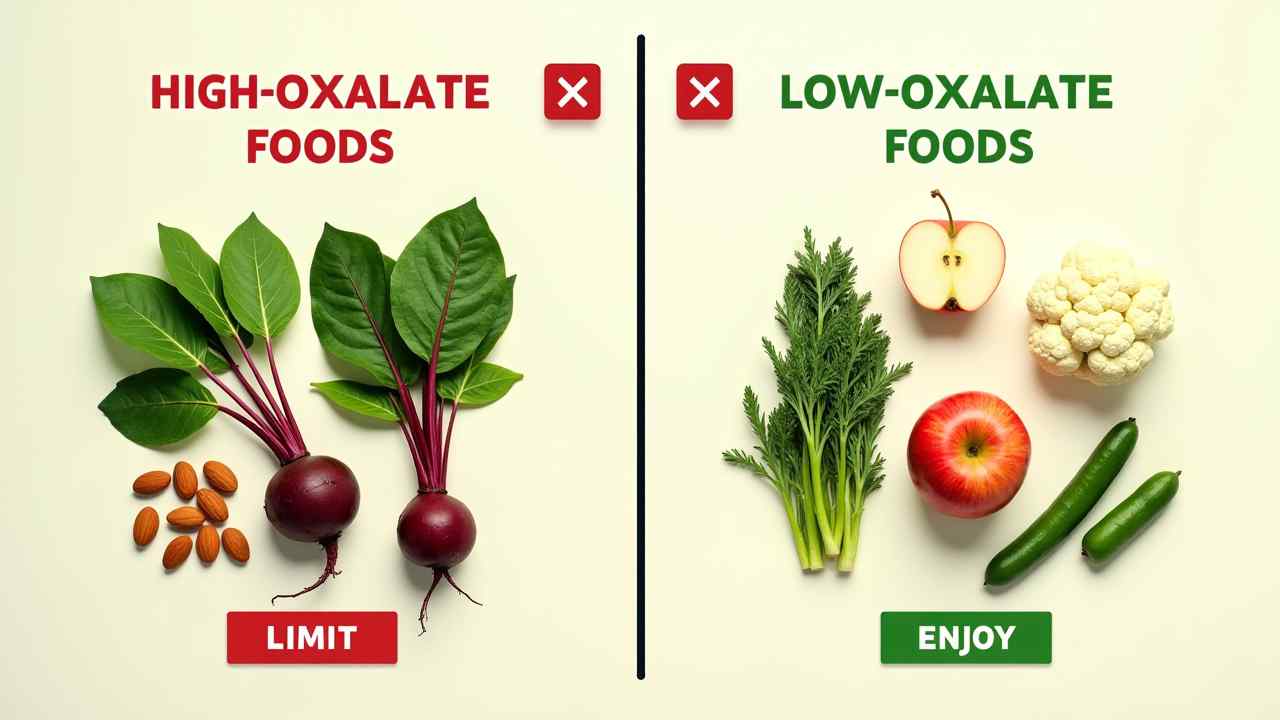
🩺 A Guide to the Low-Oxalate Diet (For Kidney Stone Prevention)
🩺 What is a Low-Oxalate Diet? (A Guide to Preventing Kidney Stones) 🩺
❗ Important Medical Information: A low-oxalate diet is a therapeutic diet. It should only be followed under the guidance of a doctor or a registered dietitian. They can provide a personalized plan based on your specific health needs.
If you have had a calcium oxalate kidney stone, your doctor may have recommended this diet. It can feel overwhelming at first. Many surprisingly "healthy" foods are on the restriction list. This can make meal planning seem difficult.
However, the diet is not about eliminating all healthy foods. It is about being smart and selective. This guide will explain what oxalates are. We will also cover the high and low-oxalate food lists. Let's make this medical diet manageable. ✅
🤔 What Are Oxalates and Why Do They Matter?
Oxalates, or oxalic acid, are natural compounds. They are found in many plant-based foods. They are a normal part of a healthy diet. For most people, they are harmless. Your body excretes them through your urine.
The problem arises in certain individuals. When there is a high concentration of oxalate in the urine, it can bind with calcium. This forms tiny, sharp crystals. Over time, these crystals can build up and form a calcium oxalate kidney stone. This is the most common type of kidney stone.
The goal of a low-oxalate diet is simple. It is to reduce the amount of oxalate in your urine. This lowers the chance that these painful crystals will form. It is a key preventative strategy.
🚫 What Are the Highest-Oxalate Foods to Limit or Avoid?
This is the most important part of the diet. You need to know the biggest offenders. Some of the healthiest-sounding foods are actually very high in oxalates. You must strictly limit or avoid these.
The most famous high-oxalate foods include:
- Spinach: This is the number one culprit. It is extremely high in oxalates.
- Almonds and Cashews: Most nuts are high in oxalates, but almonds are one of the worst.
- Rhubarb
- Beets and Beet Greens
- Soy Products: This includes tofu, soy milk, and edamame.
- Potatoes: Especially sweet potatoes.
- Dark Chocolate and Cocoa Powder
✅ What Are Some Low-Oxalate Foods to Enjoy?
The good news is, there are still plenty of delicious and healthy foods you can eat. Building your meals around these low-oxalate options is the key to a successful diet. You have many great choices.
Some popular low-oxalate foods include:
- Vegetables: Cucumber, cauliflower, cabbage, and iceberg lettuce.
- Fruits: Apples, bananas, grapes, and melon.
- Grains: White rice.
- Protein: Meat, poultry, fish, and eggs are all virtually oxalate-free.
- Dairy: Milk, cheese, and yogurt ("yoğurt") are also great choices.
💧 What Are Other Important Strategies for Preventing Kidney Stones?
A low-oxalate diet is just one part of the puzzle. Your doctor will also emphasize a few other crucial habits. These are just as important, if not more so, than the diet itself.
1. Drink Plenty of Water: This is the most important rule. Staying hydrated keeps your urine diluted. This makes it much harder for crystals to form and concentrate. Aim to drink enough to keep your urine a pale yellow color.
2. Eat Enough Calcium: This might sound strange, but it is vital. You should eat calcium-rich foods with your meals. The calcium will bind to the oxalate in your gut. This allows it to be excreted in your stool, instead of your urine. This is a very effective strategy.
3. Reduce Sodium: A high-salt diet can increase the amount of calcium in your urine. This increases the risk of stone formation. Limiting processed foods is a great way to lower your sodium intake.
By combining these strategies, you can take powerful steps to prevent future kidney stones. Always work with your healthcare team to create the best plan for you. ✨